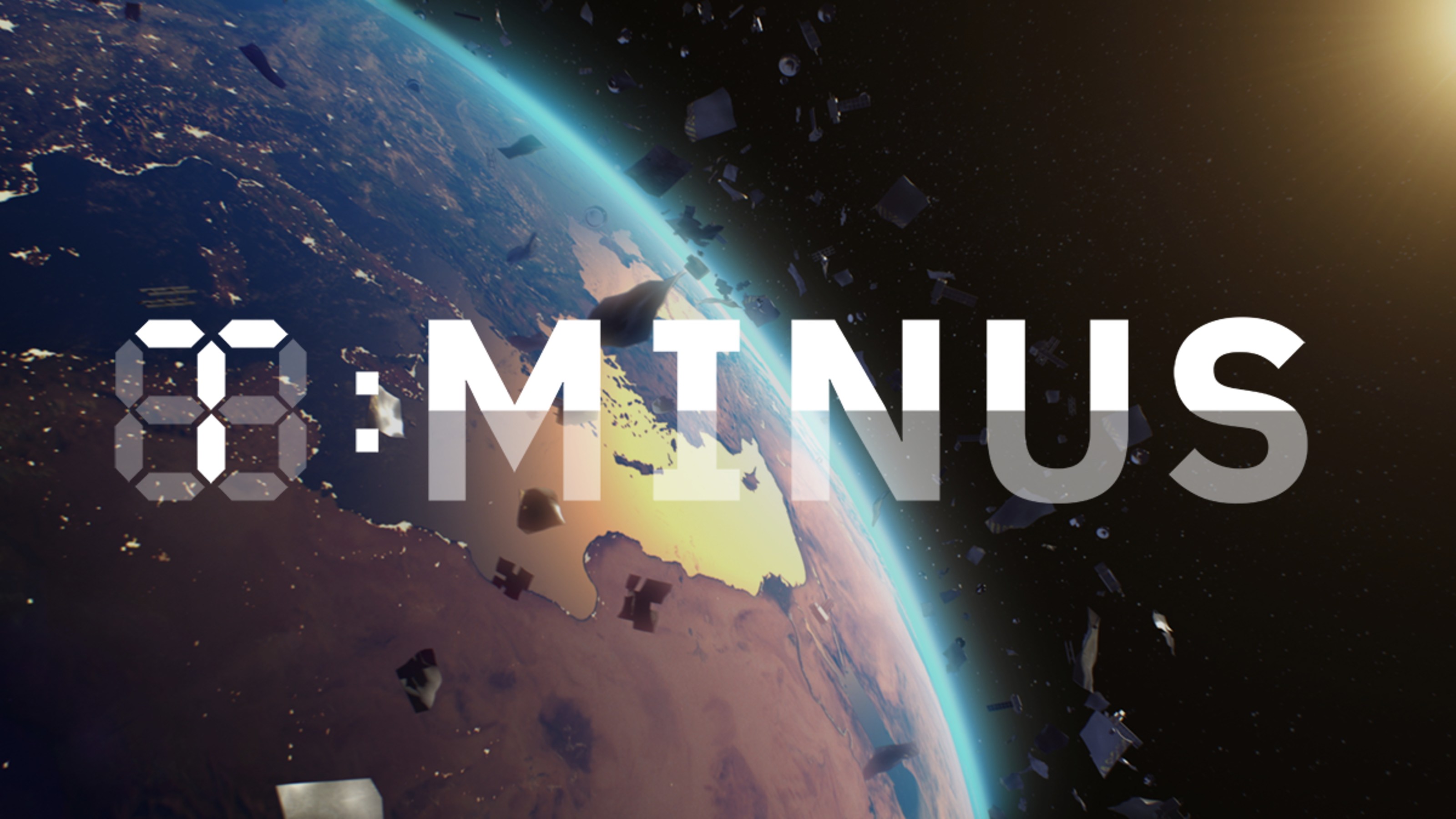Why NASA’s James Webb Space Telescope Will Never Live As Long As Hubble

Hubble’s still going strong after 31+ years. James Webb will never make it that long.
Every decision that’s made — in both astronomy and in life — comes with its own set of pros and cons. Setting up an observatory in space is expensive, precarious, and is dependent on a successful launch and deployment: there are multiple single-points-of-failure, and if anything catastrophic goes wrong, the entire mission is all for naught. Yet if you succeed, you can observe as no ground-based observatory can: without interference from the atmosphere, without concern for day-or-night, without being affected by terrestrial light pollution, and over a range of wavelengths that are heavily restricted back on Earth.
While NASA’s Hubble Space Telescope remains, in many ways, humanity’s premier optical observatory, its infrared views are fundamentally limited in many ways by its very design. In terms of temperature, resolution, light-gathering power and wavelength range, it will be significantly outclassed by the upcoming James Webb Space Telescope, which will push back the frontiers of knowledge in many substantial ways. But one way that Webb will never be able to compete with Hubble is in terms of longevity. Whereas Hubble is back in action after overcoming its latest challenge, marking more than 31 years of operations, Webb will be lucky to last a decade. Here’s why.
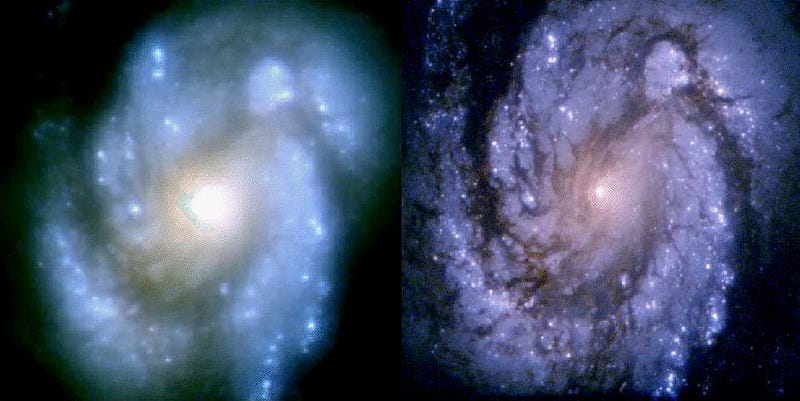
When NASA’s Hubble Space Telescope was launched in 1990, it marked the beginning of the modern era of space-based astronomy. Previously, all cutting-edge optical telescopes had been confined to the ground, where they had no choice but to contend with Earth’s atmosphere. Even from the peaks of the highest equatorial mountains with clear skies and dry, non-turbulent air, it’s still akin to looking out at the Universe from the bottom of a swimming pool. The atmosphere, no matter how good our optical conditions are, is still a tremendous obstacle to be reckoned with.
Going to space has its disadvantages, to be certain. In particular:
- your observatory is going to be unevenly heated by the Sun,
- your observatory is going to be very difficult (if not impossible) to repair,
- your observatory’s instrument technology will be “frozen in” at launch, rather than easily upgradable,
- your observatory’s size and weight will be limited by the launch vehicle’s payload,
- and launch-and-deployment are both expensive and risky: a catastrophic failure means a lost, unrecoverable space telescope.
It’s why designing our observatories to extract the maximum amount of science for our investment is of paramount importance.
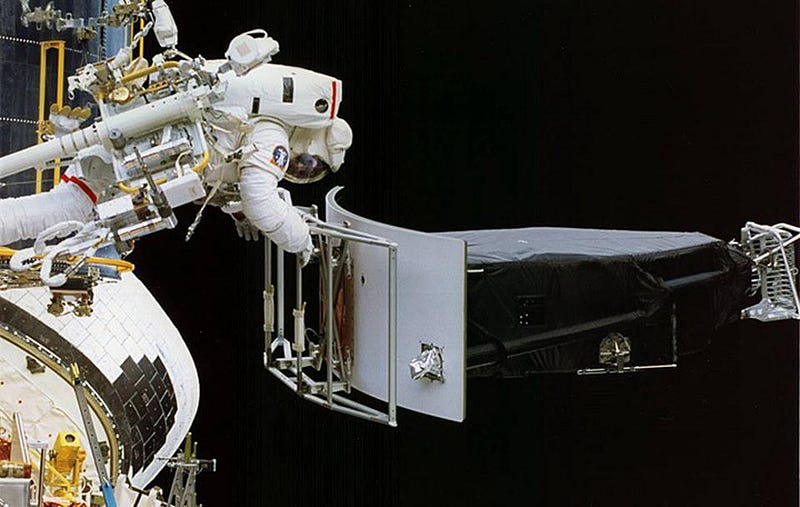
With Hubble, the decision was made long ago to put it in low-Earth orbit: the most accessible place to humanity in outer space. Hubble had a lot of modular parts to it, and as a result of these two decisions, we were able to perform a total of four servicing missions to it during the Space Shuttle era. Even when a flaw in the optics of its primary mirror was discovered, the telescope wasn’t ruined as a result; the instruments could be upgraded with add-ons that compensated for the flaws in the mirrors. With the final servicing mission performed in 2009, its current suite of instruments were installed and repaired, and a new set of gyroscopes and computers were added on-board.
Even if another one or even two of its gyroscopes were to fail, Hubble would still remain operational and be capable of pointing itself to take new observations. As long as it doesn’t suffer a catastrophic failure to one of its critical, non-redundant components, it could, in principle, remain operational for many years more.
But for the James Webb Space Telescope, it’s an entirely different story.
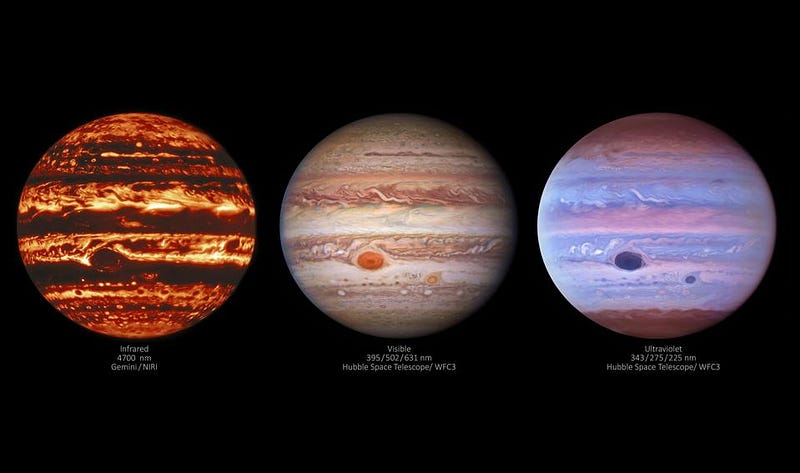
To understand why, it’s important to understand one of Hubble’s most fundamental limitations: the wavelength range over which it can observe. Just like telescopes here on Earth, Hubble is eminently capable of observing the full suite of visible light wavelengths. Unlike telescopes on Earth, Hubble can also observe the ultraviolet portion of the spectrum in great detail; the combination of the Space Telescope Imaging Spectrograph (installed in 1997, repaired in 2009) and the Cosmic Origins Spectrograph (installed in 2009) allows us to explore wavelengths that are otherwise blocked by our atmosphere.
But on the lower-energy end of the spectrum — in the infrared — even Hubble’s cutting edge instruments run into a problem: the fact that the telescope itself is warm. Your eyes may be lousy infrared detectors, but your skin is pretty good at it, which is why you can “feel” the heat from hot objects, even if their radiation is invisible to your eyes. If we had wanted Hubble to observe at longer wavelengths, we would have needed to cool it to lower temperatures. If your instruments and/or your optics are too warm, you cannot record meaningful data beyond a certain wavelength.
Unfortunately, Hubble’s perch in low-Earth orbit, where it has to contend with not only radiation from the Sun but with the heat re-radiated and reflected from Earth itself, is a terrible location for overcoming these obstacles.
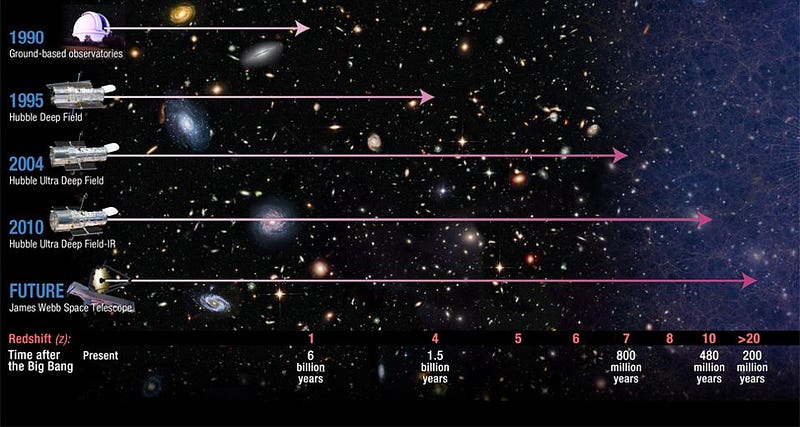
Part of the reason the James Webb Space Telescope has taken such a long time to develop is because of this very challenge. Designed to observe wavelengths up to ~10–15 times longer than Hubble is presently capable of seeing, Webb has had to rise to a series of challenges:
- implement a passive cooling system that enables constant observations at wavelengths far long than Hubble’s limits,
- implement a set of infrastructure that shields Webb and all of its instruments from the Sun’s radiation,
- implement an active cooling system that enables observations at even lower temperatures and longer wavelengths than the passive system enables,
- and place the telescope at a location where it no longer has to contend with emitted radiation from any object other than the Sun: far from the Earth, the Moon, or any other celestial bodies that hold onto large amounts of heat.
The first three concerns resulted in the development of a 5-layer sunshield that always resides between the telescope’s optics and the Sun, as well as an active cooling system that opens up not only the full range of the near-infrared portion of the spectrum but also the mid-infrared (corresponding to temperatures of ~7 K and wavelengths of ~30 microns). This design, difficult and novel to implement, will empower Webb to reveal the Universe to far greater precision than any prior observatory, including NASA’s Spitzer or WISE or ESA’s Herschel, its three most closely-related predecessors.
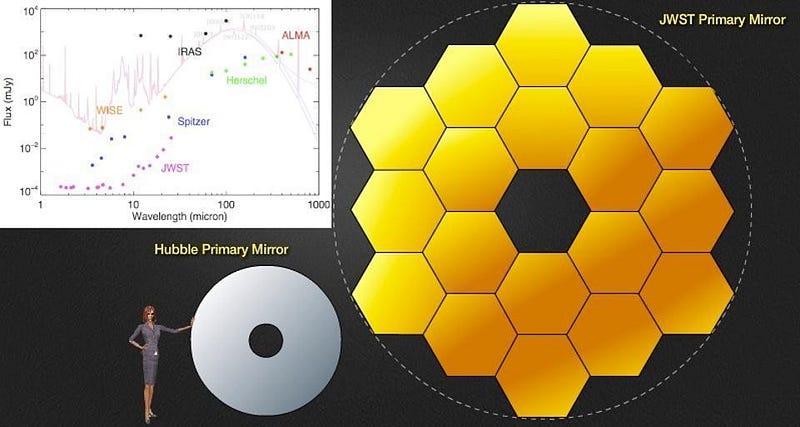
However, the fact that we have to locate Webb so far away from Earth is what most severely limits its lifetime. Ideally, we’d be able to orient Webb so that the Sun, Earth, and Moon were always on the same side of the telescope: so that the sunshade can face them, while the optics and instruments can remain shielded from them. Also, we’d like it so that the telescope moved with planet Earth in our orbit, so that we could send-and-receive signals from Webb — including downloading its data as fast as we can acquire it and issuing time-sensitive commands — on a consistent basis that doesn’t depend on where the telescope is with respect to our planet.
As it turns out, there are only five points around any planetary orbit where the gravitational forces all add up so that a satellite, whether artificial or natural, always remains in the same relative position to the Sun and the planet in question. These five points, known as the Lagrange points, will maintain a constant distance between a spacecraft and a planet. Specifically, the L2 Lagrange point is the only one that makes sense: on the “away” side of the Sun, Earth, and Moon, located about 1.5 million km away from our planet. (About four times the distance from the Earth to the Moon.)
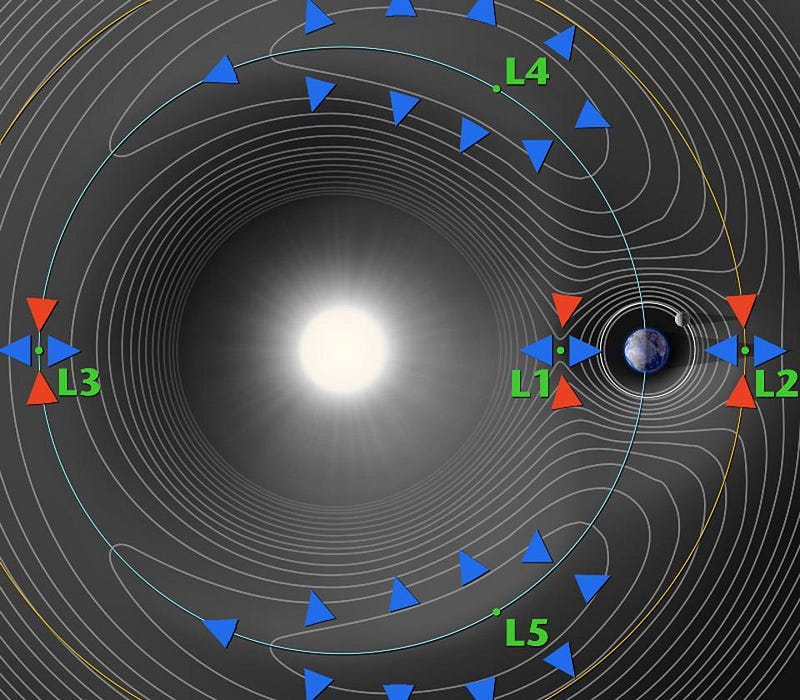
These Lagrange points are also special because they enable us to minimize the fuel required to remain in this quasi-stable orbit. Previously, cryogenic satellites like WMAP and Planck were sent into orbit around the L2 Lagrange point with the mission of conducting a high-resolution, all-sky map of the sky at microwave frequencies, ideal for measuring the leftover, remnant radiation from the Big Bang. For other observatories specialized for observing at long wavelengths — past and future — L2 represents a uniquely advantageous point to be located.
Why is that? Put simply, there are three reasons for it.
- First, a spacecraft located at L2 can readily communicate with Earth at all times with the same latency: it takes only 10 seconds of light-travel time for a round-trip signal, which is practically nothing when it comes to distances and times within the Solar System.
- Second, a spacecraft at L2 will always see the Sun, Moon, and Earth on one side of it, with a clear view of deep space on the opposing side, making it ideal for astronomical purposes.
- And third, a spacecraft orbiting around the L2 point, even though it’s an unstable equilibrium, only needs a course and attitude correction on timescales of just over 3 weeks, minimizing the amount of fuel needed to maintain its orbit.
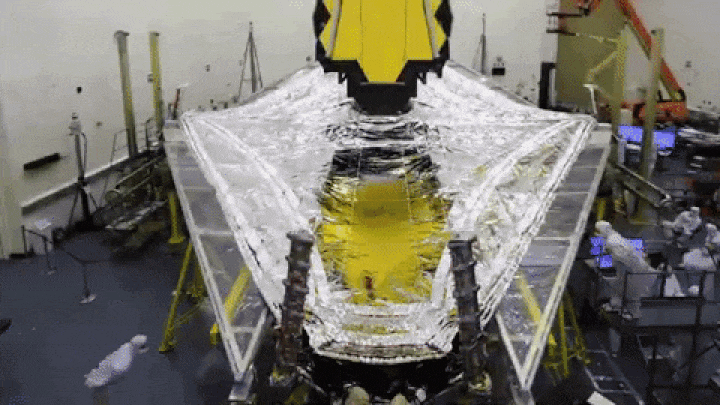
And yet, even with all of that, Webb was only designed for a primary 5-year mission, with hopes that it might wind up lasting for 10-years or slightly over, if we get very lucky. Webb was not designed to be refueled, repaired, or upgraded in any way; whatever is on board at the time it’s launched is what we’ll be stuck with for as long as it remains operational.
Compare that with Hubble, which — although it was designed for a 10-year mission, many hoped it would last for 15 or more — was designed to be upgraded, and is still going strong after 31+ years.
The difference, of course, is location. Located just ~600 km above Earth’s surface, Hubble is readily accessible for crewed servicing. No crewed vehicle has ever ventured significantly beyond the far side of the Moon, and no planned spacecraft through 2030 — including Artemis — has the capacity to reach it. The potential benefits to making Webb serviceable were studied, but were determined to not be worth the increased cost, the increased complexity, and the increased mass that it would introduce. As such, Webb is fundamentally limited by what it’s initially outfitted with. That doesn’t just include its optics, instruments, sunshade, and other equipment, but its on-board fuel as well.
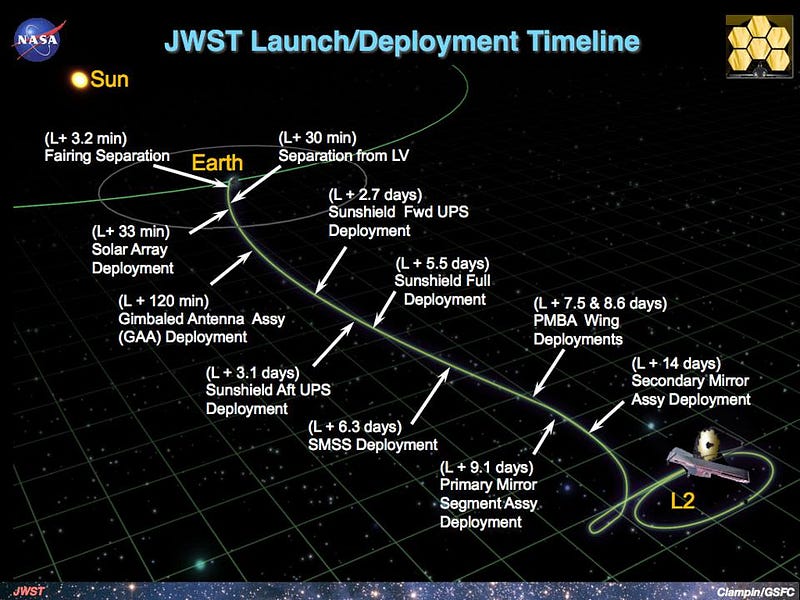
That fuel, as it turns out, is the single most limiting factor when it comes to Webb’s lifetime, as it’s required for four major purposes.
- Course corrections (or “burns”), ensuring that once Webb is released from the rocket that launches it, it properly arrives at its destination: the L2 Lagrange point. An ideally well-placed launch can reduce this cost, but it must happen at all costs; if Webb cannot reach L2, this mission will be an abject failure.
- Orbital insertion, which is required to get Webb into the quasi-stable orbit around L2 that it will maintain throughout its active lifetime. Again, this must occur.
- Orbital corrections, necessary to steadily maintain Webb’s presence at the L2 Lagrange point. There is no question of “if” this needs to occur; there are mission scientists working on precisely how to optimize the fuel uses to keep Webb alive and in its proper location for as long as possible, regardless of the launch outcomes.
- And finally, the same propellant that’s used to get Webb to its destination and keep it there is also used for pointing the telescope at distant astronomical targets and maintaining its orientation in space.
As soon as Webb runs out of fuel, it will no longer be able to maintain its orbit and it will no longer be able to point, with the requisite precision, at its astronomical targets of interest. When its fuel is gone — assuming nothing else fails in the interim — the mission is over.
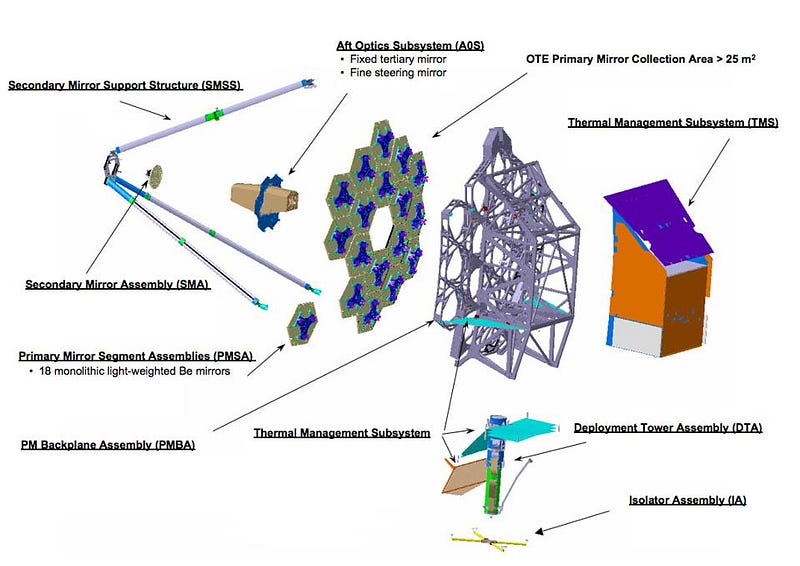
The limited amount of fuel and the lack of serviceability options means that the first six months will be absolutely critical in determining the overall lifetime of James Webb. If the launch is absolutely perfect, meaning that we exceed the expected outcome, we may need only minimal course corrections to arrive at and insert the spacecraft into orbit around L2, giving us sufficient fuel for slightly more than 10 years of operations.
If, however, the launch is on the outer margins of what it was designed to achieve, we may find ourselves with only enough fuel for ~5 years of science operations: Webb’s nominal design parameters. In a worse-case scenario, the launch goes awry, and most of the fuel needs to be spent getting Webb to L2 in the first place, while a catastrophic event would mean Webb never reaches L2 at all, rendering it the most expensive piece of “space junk” ever to launch.
https://www.youtube.com/watch?v=bTxLAGchWnA
Although you should never bet against the cleverness of NASA scientists in stretching the limits of what’s possible with even antiquated technology, you must still work within the laws of physics. Maintaining an orbit and pointing a telescope both require not only energy, but fuel as well. When the last of this precious, finite resource is spent, Webb will reach the end of its useful lifetime.
Hopefully, it will last for long enough that we’ll not only have significant overlap between Webb and Hubble, but with the ESA’s Euclid mission, the NSF’s Vera Rubin Observatory, and perhaps even NASA’s Nancy Roman Telescope. As powerful as each single observatory is on its own, there’s nothing quite so revealing as a team of great observatories all working together to unveil the mysteries of the Universe.
Starts With A Bang is written by Ethan Siegel, Ph.D., author of Beyond The Galaxy, and Treknology: The Science of Star Trek from Tricorders to Warp Drive.




